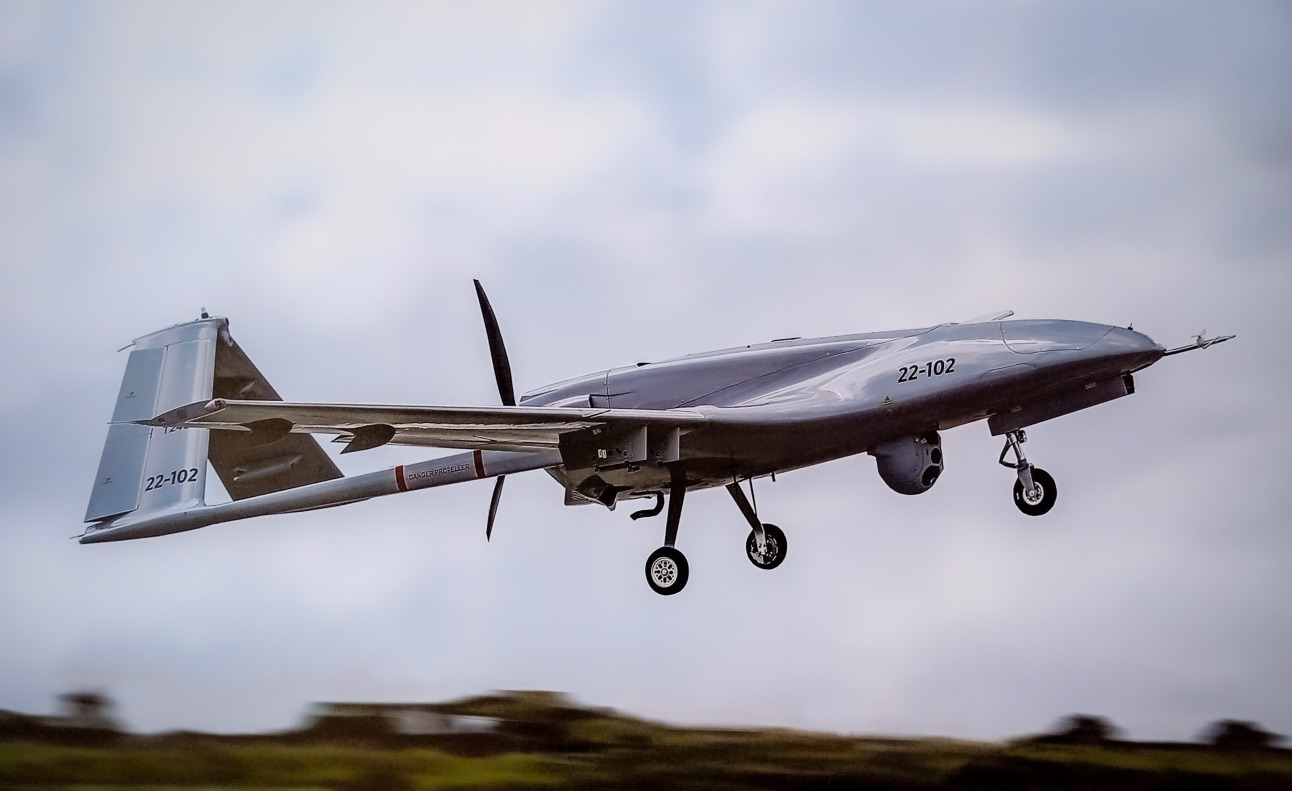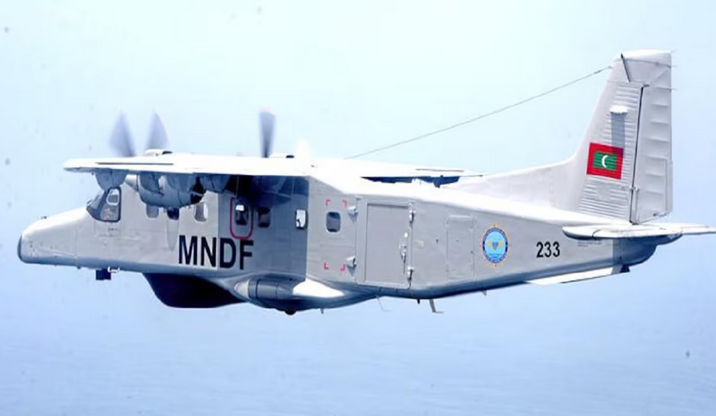Maldives has expelled 76 Indian military personnel from its territory and is counting on the backing of Chinese money and Turkish drones to ride it through. But the impetuousness of the decision has started showing.
On the one hand, the Maldivian defense minister has admitted that the Maldives military lacks trained pilots to fly two helicopters and a Dornier aircraft gifted by India; on the other, the International Monetary Fund (IMF) has warned the island country of an “external debt crisis.”
To top it all, Maldives opted for the Turkish-built Bayraktar TB2 drones to monitor its maritime environments. However, experts indicate that the UAVs cannot replace the role played by the Dornier aircraft and Advanced Light Helicopters (ALH) gifted by India to the Maldives.
As a new government came to power in Maldives, the country’s relationship with New Delhi ‘blew away.’ A defiant Maldives not only opened doors to Chinese ‘spy ships,’ but it is also cozying up to Turkey, another of India’s adversaries. Turkey was the first foreign country visited by Mohamed Muizzu after he was sworn in as president in November.
The new government in Maldives has signed a $37 million deal with Turkey to buy military drones that will patrol its high seas – a task that India has so far done in partnership with the Maldivian defense forces.
“Manned to unmanned. I don’t know what kind of excellence they (Maldivians) possess in collating and analyzing the data that would be streamed by drones. The Dornier had pilots, and they were aware of the situation and tasking,” former Indian Navy spokesperson Captain DK Sharma (retired) told the EurAsian Times.
“Also, no CASEVAC (Casualty Evacuation) can happen by Drones. Drones are only for ISR (Intelligence, Surveillance, and Reconnaissance), and weaponized drones are for the prosecution of targets,” Captain Sharma added. The aircraft and helicopters also work as air ambulances in the island country.
The drone deal came in the wake of Muizzu’s diplomatic visits to Turkey and China, signaling a recalibration of the Maldives’ geopolitical alignments. These Turkish drones are expected to replace the Indian Dornier aircraft for maritime operations and surveillance.
Commodore Anil Jai Singh (retired), a veteran Maritime Strategist and Vice President of the Indian Maritime Foundation, said: “Unmanned capabilities are effective force multipliers supporting manned platforms. Hence, the Dornier still has an important MDA (Maritime Domain Awareness) and SAR (Search and Rescue) role.”
The Maldivian government aims to deploy the Bayraktar TB2 drone, developed by Turkey’s Baykar Technology, to monitor its 900,000 square kilometers of EEZ, thereby enhancing its maritime monitoring capabilities. The money for these Turkish drones has been allocated from the state’s contingency budget. The money will be paid in installments.

India withdrew its 76 military personnel from Maldives. They were stationed there to operate and maintain the air assets deployed there. Maldivian Defence Minister Ghassan Maumoon, in a press conference at the President’s Office, revealed that despite ongoing training, no Maldivian soldiers in the Maldives National Defense Force (MNDF) are certified to operate these aircraft.
“As it was a training that required passing various stages, our soldiers had not reached completion due to various reasons. Therefore, there aren’t any people in our force at the moment who are licensed or fully operational to fly the AHL platforms and Dornier,” Ghassan said at the press conference held at the President’s Office.
Intere
Has Maldives Walked Itself Into Chinese Trap?
Official data shows that the Maldives’ foreign debt reached $4.038 billion in 2023, about 118 percent of gross domestic product and up from nearly $250 million in 2022.
As of June 2023, the Export-Import Bank of China owned 25.2 percent of the Maldives’ external debt and was the country’s biggest single lender, Maldives finance ministry figures showed. Neighboring island country Sri Lanka’s economy went into a spin, bringing months of food and fuel shortages after it defaulted on foreign debt in 2022.
Over 50 percent of Sri Lanka’s bilateral debt is owed to China, and the island nation is still struggling to restructure its borrowings with IMF assistance.
Without naming Maldives main lender, the IMF said the Maldives remained “at high risk of external and overall debt distress” without “significant policy changes”.
“Uncertainty surrounding the outlook is high, and risks are tilted to the downside, including from delayed fiscal consolidation and weaker growth in key sources markets for tourism,” the IMF said in a statement.
The Maldives’ location makes it a strategic priority for both the rising Asian countries. China needs a foothold for its military in the Arabian Sea to safeguard its access to oil from the Persian Gulf. And India, which has been clashing with China along their Himalayan border, wants to make sure that the Maldives, its island neighbor, doesn’t become too cozy with Beijing.

Role Played by Indian Air Assets In Maldives
The helicopters and aircraft provided by India have played an important role “in numerous emergency medical evacuations.” The Indian government has been hoping to find a “workable solution” to keep some assets to fight drug traffickers and piracy in the region, but its hopes were dashed as a China-pumped Muizzu government asked Indian military personnel to leave the country by May 10.
India has been doing anti-piracy missions in the waters around Maldives since 2011. Over the last five years, these Indian armed forces personnel posted in Maldives have carried out more than 500 medical evacuations, saving 523 Maldivian lives. Of these, 131 evacuations were carried out in 2023 alone.
Similarly, during the last five years, more than 450 multifaceted missions have been carried out to safeguard the maritime security of Maldives. Of these, 122 missions were carried out in 2022.
In May 2023, India handed over a fast patrol vessel along with a landing craft assault ship to the Maldivian National Defense Forces (MNDF). The patrol vessel, capable of coastal and offshore surveillance at high speeds, was commissioned as MNDF Coast Guard Ship Huravee. India has also been providing support in maintaining and repairing the MNDF Coast Guard Fleet.
Given the maritime dominance in the India-Maldives relationship, the two countries had earlier signed an agreement to “develop, support, and maintain a Maldives National Defense Force Coast Guard Harbor” for enhanced regional maritime security cooperation. The harbor will be developed at the Uthuru Thila Falhu naval base, and the Indian side has already submitted a Detailed Project Report (DPR) on its development.
India has also been the first responder for Maldives in any disaster scenario, including most recently during Covid. During the peak of the pandemic, India supplied 100,000 Covishield vaccines to Maldives.
- Ritu Sharma has been a journalist for over a decade, writing on defense, foreign affairs, and nuclear technology.
- The author can be reached at ritu.sharma (at) mail.com
- Follow EurAsian Times on Google News




